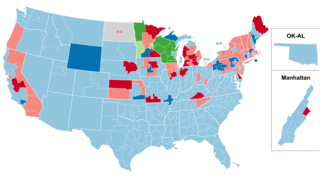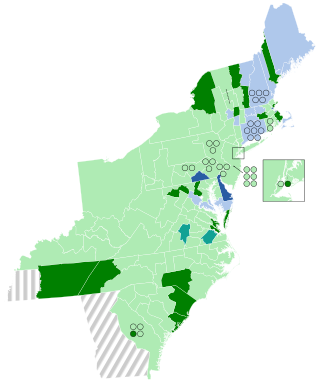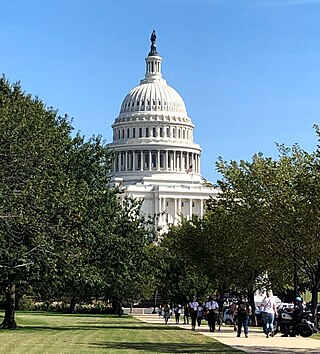The Politburo, Secretariat and Orgburo of the 9th Congress of the Russian Communist Party (Bolsheviks) were elected by the 1st Plenary Session of the 9th Central Committee, in the immediate aftermath of the 9th Congress.
The Politburo, Secretariat and Orgburo of the 9th Congress of the Russian Communist Party (Bolsheviks) were elected by the 1st Plenary Session of the 9th Central Committee, in the immediate aftermath of the 9th Congress.
9th Politburo and Secretariat | |
|---|---|
 | |
| 5 April 1920 – 16 March 1921 |
|
|
| Name (birth–death) | Took office | Left office | Duration | Note |
|---|---|---|---|---|
| Nikolay Krestinsky (1883–1938) | 5 April 1920 | 16 March 1921 | 345 days | Elected Responsible Secretary at the 1st Plenary Session. |
| Yevgeni Preobrazhensky (1886–1937) | 5 April 1920 | 16 March 1921 | 345 days | — |
| Leonid Serebryakov (1890–1937) | 5 April 1920 | 16 March 1921 | 345 days | — |
| Name (birth–death) | Took office | Left office | Duration |
|---|---|---|---|
| Nikolay Krestinsky (1883–1938) | 5 April 1920 | 16 March 1921 | 345 days |
| Yevgeni Preobrazhensky (1886–1937) | 5 April 1920 | 16 March 1921 | 345 days |
| Alexey Rykov (1881–1938) | 5 April 1920 | 16 March 1921 | 345 days |
| Leonid Serebryakov (1890–1937) | 5 April 1920 | 16 March 1921 | 345 days |
| Joseph Stalin (1878–1953) | 5 April 1920 | 16 March 1921 | 345 days |
| Name (birth–death) | Took office | Left office | Duration |
|---|---|---|---|
| Felix Dzerzhinsky (1877–1926) | 5 April 1920 | 16 March 1921 | 345 days |
| Mikhail Tomsky (1880–1936) | 5 April 1920 | 16 March 1921 | 345 days |

Sonia Gandhi is an Indian politician of Italian origin. She is the longest serving president of the Indian National Congress, a social democratic political party, which has governed India for most of its post-independence history. She took over as the party leader in 1998, seven years after the assassination of Rajiv Gandhi, her husband and a former Prime Minister of India, and remained in office until 2017 after serving for twenty-two years. She returned to the post in 2019 and remained the President for another three years.

The 1964 United States House of Representatives elections was an election for the United States House of Representatives on November 3, 1964, to elect members to serve in the 89th United States Congress. They coincided with the election to a full term of President Lyndon B. Johnson. Johnson's landslide victory over Barry Goldwater allowed his Democratic Party to gain a net of 36 seats from the Republican Party, giving them a two-thirds majority in the House. The election also marked the first time since Reconstruction that Republicans made inroads in the deep South.

The 1940 United States House of Representatives elections were elections for the United States House of Representatives to elect members to serve in the 77th United States Congress. They were held for the most part on November 5, 1940, while Maine held theirs on September 9. They coincided with President Franklin D. Roosevelt's re-election to an unprecedented third term. His Democratic Party narrowly gained seats from the opposition Republican Party, cementing their majority. However, the election gave firm control of the US House of Representatives and Senate to the New Dealers once again, as Progressives dominated the election.

The 1934 United States House of Representatives elections were elections for the United States House of Representatives to elect members to serve in the 74th United States Congress. They were held for the most part on November 6, 1934, while Maine held theirs on September 10. They occurred in the middle of President Franklin D. Roosevelt's first term. The Democratic Party continued its progress, gaining another 9 net seats from the opposition Republican Party, who also lost seats to the Progressive Party. The Republicans were reduced below one-fourth of the chamber for the first time since the creation of the party. The Wisconsin Progressive Party, a liberal group which allied with the Democrats, also became a force in Wisconsin politics.

The 1868–69 United States House of Representatives elections were held on various dates in various states between June 1, 1868 and August 2, 1869. Each state set its own date for its elections to the House of Representatives before or after the first session of the 41st United States Congress convened on March 4, 1869. They coincided with the 1868 United States presidential election, which was won by Ulysses S. Grant. Elections were held for all 243 seats, representing 37 states. All of the former Confederate states were represented in Congress for the first time since they seceded from the Union.
The 1860–61 United States House of Representatives elections were held on various dates in various states between August 6, 1860 and October 24, 1861, before or after the first session of the 37th United States Congress convened on July 4, 1861. The number of House seats initially increased to 239 when California was apportioned an extra one, but these elections were affected by the outbreak of the American Civil War and resulted in over 56 vacancies.
The 1856–57 United States House of Representatives elections were held on various dates in various states between August 4, 1856 and November 4, 1857. Each state set its own date for its elections to the House of Representatives. 236 representatives were elected in 31 states and the pending new state of Minnesota before the first session of the 35th United States Congress convened on December 7, 1857.
The 1844–45 United States House of Representatives elections were held on various dates in various states between July 1, 1844 and November 4, 1845. Each state set its own date for its elections to the House of Representatives. 224 elected members representing 27 states took their seats when the first session of the 29th United States Congress convened on December 1, 1845. The new state of Florida elected its first representative during this election cycle, while one vacancy in New Hampshire's delegation remained unfilled for the duration of the 29th Congress.

The 1804–05 United States House of Representatives elections were held on various dates in various states between April 24, 1804 and August 5, 1805. Each state set its own date for its elections to the House of Representatives before the first session of the 9th United States Congress convened on December 2, 1805. The elections occurred at the same time as President Thomas Jefferson's re-election. Elections were held for all 142 seats, representing 17 states.

Massachusetts's 9th congressional district is located in eastern Massachusetts. It is represented by Democrat William R. Keating. The 9th district is the least Democratic congressional district in Massachusetts, according to the Cook Partisan Voting Index.

Massachusetts's 8th congressional district is located in eastern Massachusetts, including part of Boston. It is represented by Democrat Stephen Lynch. For one congressional term (1791–1793), it served as the home district of the District of Maine. The district boundaries were significantly changed, as of the elections of 2012, due to redistricting after the 2010 census, with the old 8th district largely being shifted to the new 7th district. The new 8th district comprises many of the communities of the old 9th district, as well as some easternmost Norfolk County communities and northernmost Plymouth County communities of the old 10th district.

Massachusetts's 10th congressional district was a small district that included parts of the South Shore of Massachusetts, and all of Cape Cod and the islands. The district had existed since 1795, but was removed for the 113th Congress in 2013 as district lines were redrawn to accommodate the loss of the seat due to reapportionment as a result of the 2010 census. Effective from the elections of 2012, most of the former district falls into the new Massachusetts 9th congressional district, with some northern portions falling in the new 8th district.

The 115th United States Congress was a meeting of the legislative branch of the United States of America federal government, composed of the Senate and the House of Representatives. It met in Washington, D.C., from January 3, 2017, to January 3, 2019, during the final weeks of Barack Obama's presidency and the first two years of Donald Trump's presidency. The seats in the House were apportioned based on the 2010 United States census.

A special election was held in New York's 1st congressional district April 24–26, 1804 to fill a vacancy left by the resignation of John Smith (DR) on February 22, 1804, after being elected to the Senate. The election was held at the same time as the elections for the 9th Congress and were combined into a single election, with the candidate receiving the most votes going to the 9th Congress and the candidate with the second most votes going to the 8th Congress.

The 117th United States Congress was a meeting of the legislative branch of the United States federal government, composed of the United States Senate and the United States House of Representatives. It convened in Washington, D.C., on January 3, 2021, during the final weeks of Donald Trump's presidency and the first two years of Joe Biden's presidency and ended on January 3, 2023.

The 118th United States Congress is the current meeting of the legislative branch of the United States federal government, composed of the United States Senate and the United States House of Representatives. It convened in Washington, D.C., on January 3, 2023, and will end on January 3, 2025, taking place during the final two years of President Joe Biden's initial term.